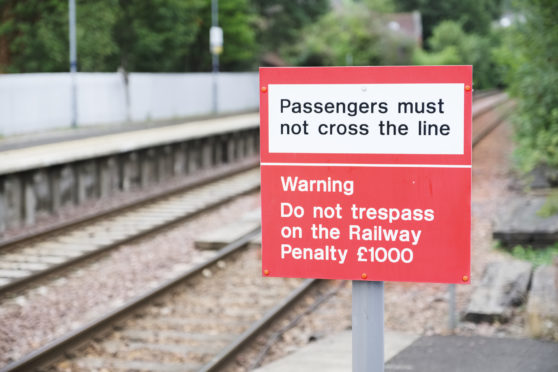
High-risk trespass locations, including one in Scotland, will be targeted by a new railway safety campaign after figures showed more than 250 incidents of dangerous behaviour are recorded every week.
People walking across tracks, taking photographs from hazardous locations and train surfing are among recent examples, Network Rail said.
Children are responsible for around a third of all cases.
Dalmuir in West Dunbartonshire has been named as one of forty-eight high-risk trespass locations across Britain which will be targeted over the coming months.
A safety campaign launched in 2018 saw a 12% reduction in the number of incidents involving children.
Network Rail and British Transport Police (BTP) have formed partnerships with two charities – the English Football League Trust and StreetGames – to encourage more young people to stay safe on the railway.
Network Rail’s head of passenger and public safety Allan Spence said: “Young people and adults alike continue to risk their lives by stepping out on to the track, and it has to stop.
“Every day we see over three dozen incidents and each one could be a potential catastrophe leading to life-changing injuries or even death.
“Sport is a powerful vehicle for communicating with this hard-to-reach audience, so by working in partnership with these sports charities we hope to be able to reach young people and teens in those communities most at risk with this incredibly important safety message.”
BTP Assistant Chief Constable Robin Smith said: “The lack of knowledge about the potential dangers seems to be why young people choose the tracks as a good place to take risks, so our main focus is on providing much-needed education.
“By working closely with the EFL Trust and StreetGames, it will give us the best possible chance of ensuring that the message resonates where it is most needed.”
EFL Trust director of operations Mike Evans said: “Football can be an enormous force for good and have a profoundly positive impact on communities, so we are looking forward to helping tackle this issue in those areas where young people are particularly vulnerable.”

Enjoy the convenience of having The Sunday Post delivered as a digital ePaper straight to your smartphone, tablet or computer.
Subscribe for only £5.49 a month and enjoy all the benefits of the printed paper as a digital replica.
Subscribe